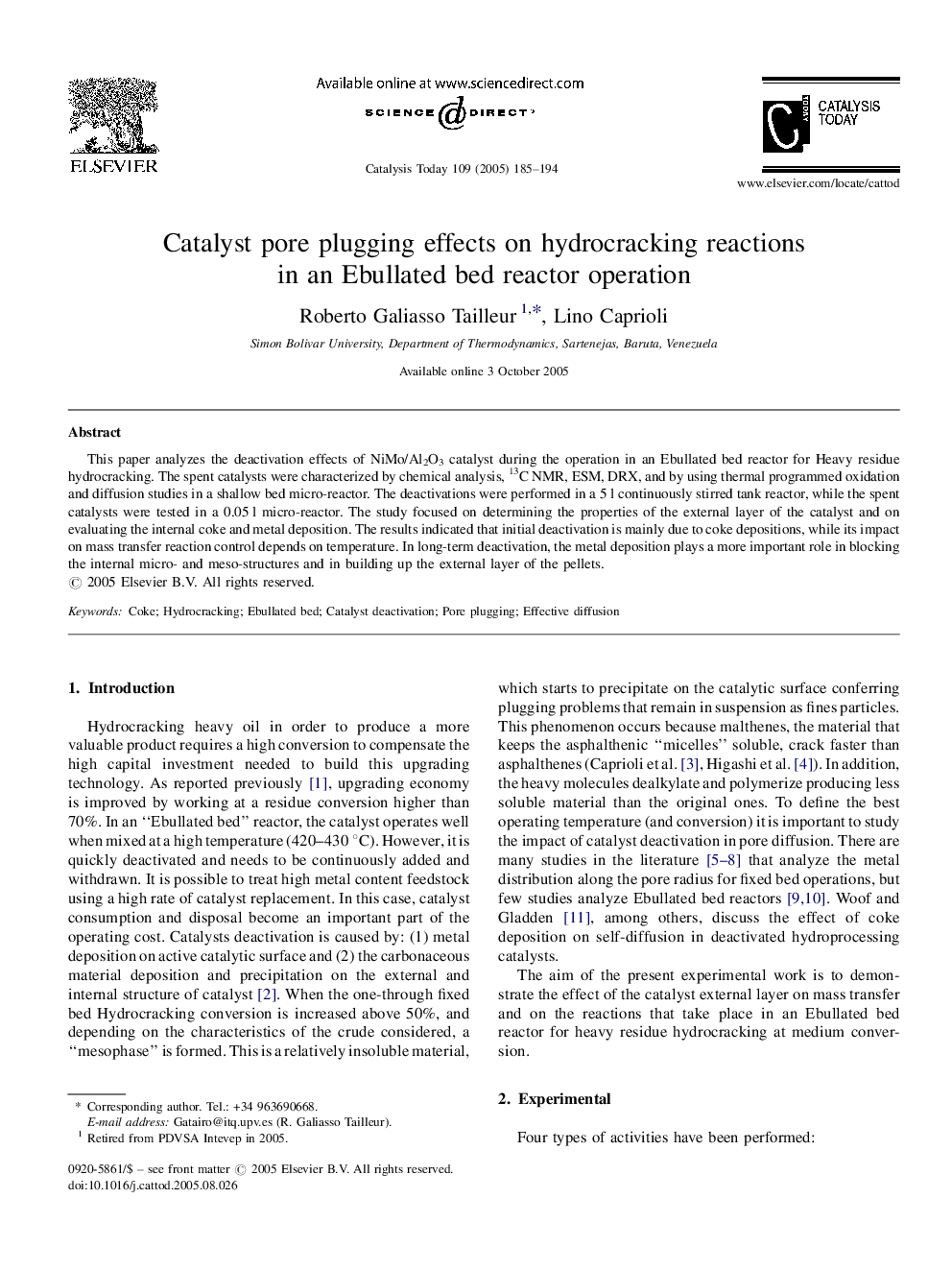| Article ID | Journal | Published Year | Pages | File Type |
|---|---|---|---|---|
| 9610153 | Catalysis Today | 2005 | 10 Pages |
Abstract
This paper analyzes the deactivation effects of NiMo/Al2O3 catalyst during the operation in an Ebullated bed reactor for Heavy residue hydrocracking. The spent catalysts were characterized by chemical analysis, 13C NMR, ESM, DRX, and by using thermal programmed oxidation and diffusion studies in a shallow bed micro-reactor. The deactivations were performed in a 5Â l continuously stirred tank reactor, while the spent catalysts were tested in a 0.05Â l micro-reactor. The study focused on determining the properties of the external layer of the catalyst and on evaluating the internal coke and metal deposition. The results indicated that initial deactivation is mainly due to coke depositions, while its impact on mass transfer reaction control depends on temperature. In long-term deactivation, the metal deposition plays a more important role in blocking the internal micro- and meso-structures and in building up the external layer of the pellets.
Related Topics
Physical Sciences and Engineering
Chemical Engineering
Catalysis
Authors
Roberto Galiasso Tailleur, Lino Caprioli,
